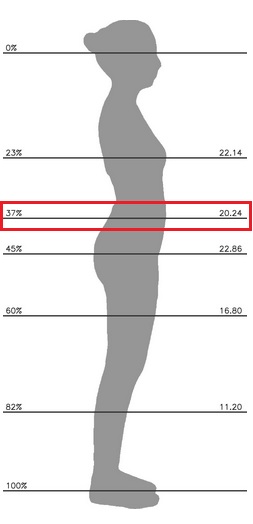Overweight and central obesity
Overweight and obesity localized in the central or abdominal area are correlated with a wide range of metabolic disorders, including glucose intolerance and insulin resistance. This form of obesity shows a more pronounced association with type 2 diabetes compared to generalized obesity. Moreover, among the different types of fat that characterize abdominal obesity, visceral fat seems to have a more significant impact on the development of diabetes and related conditions compared to subcutaneous fat.
BMI and waist circumference
It is universally known that BMI and waist circumference are among the most widespread measurement methods to assess the connection between body size, fat distribution, and glucose metabolism. However, it is important to note that such measurements constitute indirect approaches to this evaluation.
DXA and MRI
Computed tomography, magnetic resonance imaging, and dual-energy X-ray absorptiometry (DXA) are able to accurately assess visceral and abdominal fat. However, these methods are very expensive and produce radiation exposure.
FitYourOutfit SLSDI – Digital Image Body Analysis
The SLSDI (Single Lateral Standing Digital Image) application allows the automatic acquisition of various anthropometric measurements, including abdominal diameter. The FitYourOutfit analysis, which can be performed using a smartphone or tablet, automatically detects the measurement of the sagittal abdominal diameter (SAD), also known as “abdominal height”. This method, introduced as a non-invasive approach, allows the indexing of abdominal fat, both subcutaneous and visceral.
FitYourOutfit: operator-independent measurements
FitYourOutfit offers consistently accurate and reliable measurements, regardless of the operator or the individual’s body type. This represents an advantage over measuring waist circumference, which can be more complex to perform with precision and repeatability, especially in overweight and obese subjects.
FitYourOutfit: measure your waist circumference

The assessment of the abdominal diameter, also known as SAD (Sagittal Abdominal Diameter), has emerged in various studies as a more accurate indicator of cardiovascular diseases compared to common anthropometric measurements, such as BMI, waist circumference, waist-to-hip ratio (WHR), and skinfold thickness. SAD is closely correlated with an unfavorable metabolic profile, evidenced by low HDL levels, increased triglycerides, high blood pressure, presence of inflammatory cytokines, renal sodium reabsorption, elevated blood glucose, and insulin resistance.
Abdominal diameter vs BMI
The abdominal diameter not only plays a specific role in indexing abdominal fat, but also emerges as a particularly effective predictor compared to BMI or waist circumference in predicting the onset of glucose intolerance and other metabolic disorders. The measurement of the abdominal diameter (SAD) possesses a unique characteristic that enhances the ability to anticipate various indices of glucose metabolism compared to measurements of waist circumference and BMI.
Abdominal diameter vs. waist circumference
Let’s remember that the measurement of waist circumference includes both the depth (or height) and width of the abdomen, while the measurement of the abdominal diameter (SAD) focuses exclusively on the abdominal height, offering a more precise reflection of visceral adiposity. The latter is considered one of the best diagnostic indicators for metabolic abnormalities. Moreover, the abdominal diameter has been associated with a reduction in liver and lung functionality.
Abdominal diameter: a sensitive marker
This parameter maintains a high and unique predictive quality even on various types of subjects. Several researchers, including Gletsu-Miller, have highlighted the great effectiveness of measuring the abdominal diameter compared to the waist circumference. This is because the waist circumference is a difficult parameter to measure reliably due to its variable width, often flaccid skin folds, and the complexity of identifying the correct reference points for the operator.
SLSDI – FitYourOutfit
As already published in various scientific journals, the analysis of abdominal obesity can be carried out using the novel and innovative non-invasive SLSDI – FYO (Digital Image Body Analysis) technology that comes to the aid of the professional as it has proven to be a validated, accurate, operator-independent method that can be used in daily outpatient practice by all professionals as it is easy to use, quick in the time it takes to take a single photo of the subject, very accurate and repeatable.